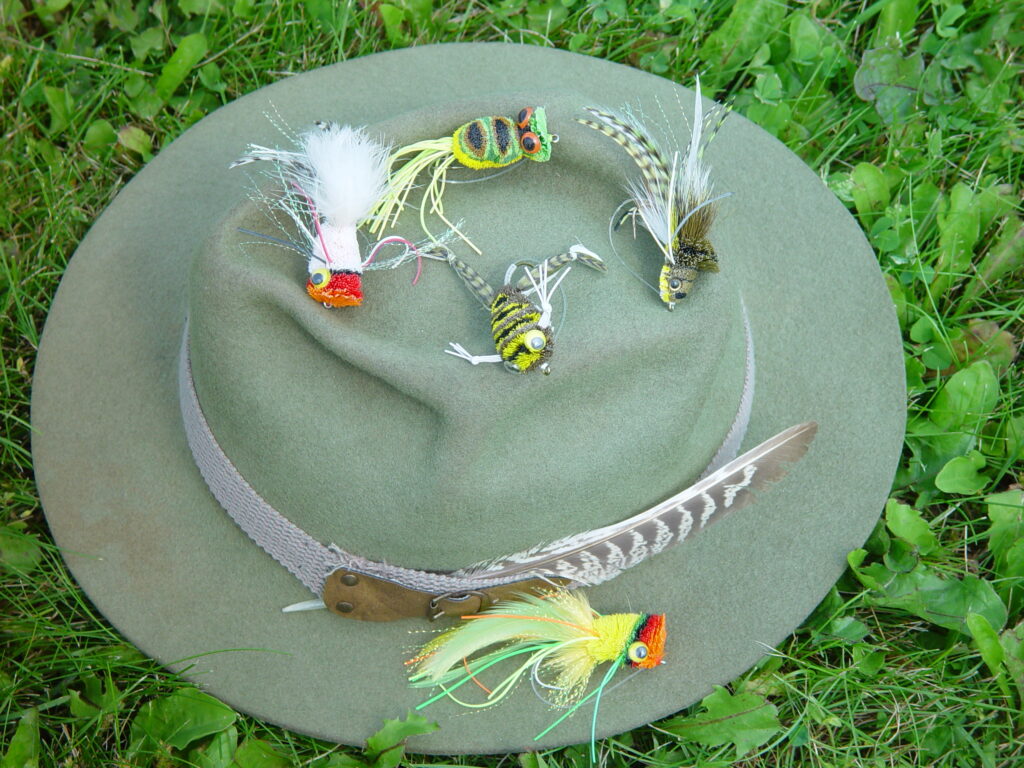
Brook trout and salmon head for the cold creek seeps and deep holes as summer temperatures rise and water levels drop. Cold-water species of fish become more lethargic and much more difficult to catch during hot, humid weather because the oxygen level in the water drops significantly.
Warm-water species such as perch, pickerel and bass suffer no such letdown. Black bass, known as smallmouth or bronzeback here in Maine, become particularly aggressive toward topwater baits.
A majority of Aroostook anglers already own a spinning rod and or a bait casting outfit, so purchasing a few hardbody plugs and softbody baits will prepare you for bass fishing. Nothing, however, will prepare you for the first time a three-pound smallie explodes on a surface lure, then spends as much time in the air as in the water during a tough tug-of-war. Experience this acrobatic, aerobatic action a dozen or more times an outing and the sport of bass casting is likely to become more of an obsession.
Being an avid fly fisherman since my teens, it didn’t take too many trips for me to conclude there was more challenge and adventure to be enjoyed. And let me tell you, casting bass bugs and popper flies is the peak of summer excitement when other styles of fly fishing are unproductive. Just endeavoring to cast a bulky floating bass fly with precision and without whacking or hooking yourself is an experience very different than casting a wet or dry fly.

Actually hooking and landing a leaping, hard-fighting smallmouth on a single-hook fly, especially one with a weed guard, is less likely than on a multi-hook lure. I use a nine-foot, five-weight fly rod with large arbor reel loaded with a weight-forward floating bass taper line for long, accurate casting. The rod is a multi-section model that fits into a hard travel tube only 15 inches long. I store it in my waterproof boat bag, along with a large box of bass bugs and poppers, and store the reel in a zippered protective cover. I can have the whole outfit unpacked and rigged within five minutes of spotting smallies feeding on the surface.
Smallmouth are aggressive, non-selective, carnivorous eaters, and woe to any poor amphibian, reptile, small bird, mouse, mole or tasty insect struggling on the water surface. It’s a pretty picture to watch trout or salmon grab a floating dry fly, but when a big bronzeback explodes on a bass bug it is a pulse-quickening sight to behold. Bass fight as if they are two or three times their actual size and generally outbattle most cold-water cousins.
Colorful, hard-bodied, feather-adorned poppers are smaller and a bit easier to cast than their large spun deer hair, fur and feather tied and trimmed bass bugs. It’s been my experience that the bigger bugs attract bigger bass, and the larger hook is less likely to pull free. Bright green, yellow and black seem to be the most attractive colors for bass bugs in various combinations and shapes, and rubber or hair-formed legs add to the realism.
Fishing a plastic, foam or hair body bass bug is fairly simple for even novice fly casters. Look for stumps, dock posts overhanging bushes, large rocks or logs at water’s edge, then pole, paddle or electric motor within comfortable casting distance. Bass like to station near structure and shade, watching and waiting to pounce on an easy meal. Cast your bass bug near the target area and let it splash down, making noise and rings in the water to attract attention.

Often a smallie will attack immediately, but if not, just let the popper sit still until the rings disappear, then give the line a quick jerk, keeping the rod tip close to the water’s surface. If there’s still no strike, begin working the fly in short steps back to the boat. Be ready to set the hook before the striking bass realizes the bug isn’t real food and spits the fly.
The only downside to fishing bass in Aroostook is driving at least an hour to reach a productive waterway. The only option to the north is the St. John River near Fort Kent that flows many miles through towns and villages in the St. John Valley. Dozens of launch sites for a stable canoe or moderate-size boat and lots of big bass make the trip worthwhile.
Smallmouth bass lakes abound to the south, but some have no launch ramps and are rough, unmaintained sites, so check beforehand to assure your watercraft will fit and float off the trailer.
East Grand, Pleasant, Baskahegan, Mattawamkeag, Hot Brook and Crooked Brook are spread from Island Falls to Danforth and boast large populations of bass. Crowding is seldom a problem on these large lakes, especially in August and September, and it is rare for me to spot two other fishing boats during an evening outing.
The next few weeks are prime time for casting bass bugs with a fly rod and smallmouth remain active while other cold water species are sulking. For a splashing, thrashing and leaping battle on hot summer nights, maybe it’s time for you to try bugging some bass.







